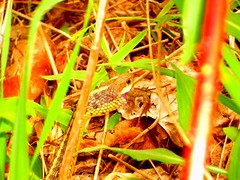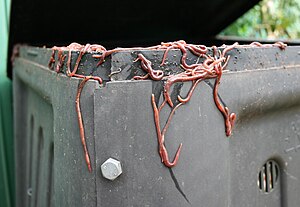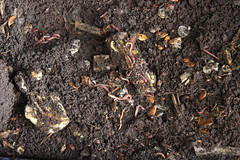 Image via WikipediaMealworms are scavengers. It doesn't necessarily make them a bad worm, but it does help to understand them. If you want to start a mealworm farm, you can find starters in damp, spoiled grain and grain products. Perhaps you have access to a grain bin of some sort, a grain processing plant, or can get infested cereal from a cereal factory.
Image via WikipediaMealworms are scavengers. It doesn't necessarily make them a bad worm, but it does help to understand them. If you want to start a mealworm farm, you can find starters in damp, spoiled grain and grain products. Perhaps you have access to a grain bin of some sort, a grain processing plant, or can get infested cereal from a cereal factory.The dark mealworm is the species found throughout the United States. Anyone who has found them in their flour or corn meal would not consider them friends! But in this instance, you can turn an enemy into a friend and gain a profit from the experience.
The trick to worm farming of any kind is to start small and work your way up. You have to learn your limits and gain experience, find a market for your mealworms, and become educated about your product. But anything worth having is worth working for.
People have been known to use the mealworm as fish bait or food for their birds or reptiles. They're people food in some places!
One interesting fact about mealworm farming is that powdery residues can build-up in the containers. This residue, also known as frass, contains mealworm eggs. You can separate this frass with a sifter of some sort once a month, keep it in a separate container, and feed it with raw pieces of potatoes or bran. It takes a month for the eggs to hatch.
Females are capable of producing up to 500 eggs, but the adults only live a short time of 3 months at most. They get their fluids from wet fruits like apples or over-ripe bananas and vegetables such as the potato or carrot. They also lay eggs on these foods. You can keep them alive and dormant at temperatures over 40 degrees. They prefer warm environments of 80 degrees to grow and change. So, don't plan on them reproducing at the lower temperatures.
Did you know you can eat mealworms raw and live? Ok, it's not your average meal, but it's healthy and is encouraged in other countries. If you want the benefits, but can't stomach the thought, maybe you could try baking them or turning them into flour to use in other recipes. Just spread them on a lightly greased baking sheet and cook for up to 3 hours at 200 degrees. They're done when brittle. Toss them into a blender or grinder until they resemble wheat germ. If nothing else, you could safely serve them to that irritating cousin just for a laugh. It can be your little secret!
Meal worm farming is one of the cheapest worm farming you can enter. It's a great way to experiment and can be a safe way to feed your pets something natural and healthy. You could add the worms to your dog or cats diet by using the flour to make your own dog or cat food. Safe, natural, and healthy is the wave of the future.




















